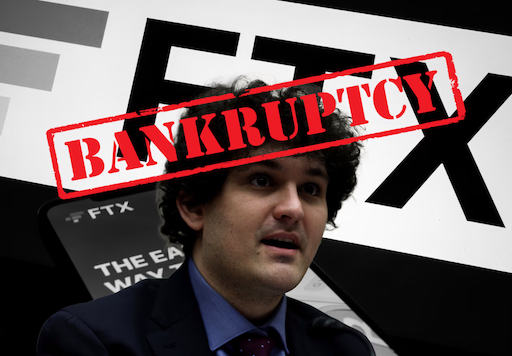How Major Crypto Firms Went Bankrupt: Lessons Learned and How Investors Can Protect Themselves
Cryptocurrency, often hailed as the “future of finance,” has been a wild ride for investors. While it promises decentralized control, transparency, and high returns, it also carries significant risks. Over the past decade, a series of high-profile crypto firms have gone bankrupt, leading to massive financial losses for investors and raising serious questions about the safety and reliability of the crypto space.
Let’s take a look at some of the most notable bankruptcies in recent years and explore the key mistakes that led to their downfall. Additionally, we’ll discuss how investors can protect themselves and which trusted crypto firms are still operational today.
Mt. Gox (2014) – The Bitcoin Exchange Disaster
Background: In 2014, Mt. Gox was the largest Bitcoin exchange in the world, handling around 70% of global Bitcoin transactions at its peak. However, it became infamous when hackers gained access to the exchange’s hot wallets, stealing approximately 850,000 bitcoins (worth billions at today’s prices).
Mistakes Made:
- Inadequate Security: Mt. Gox failed to implement proper security measures, which made it an easy target for cybercriminals.
- Poor Management: The company was unable to manage its funds effectively, with reports suggesting that Mt. Gox didn’t even keep an accurate record of how many bitcoins it actually held.
- Lack of Transparency: Mt. Gox was not transparent with its users about the hack, leading to a lack of trust in the exchange.
Implications: Mt. Gox’s bankruptcy left many investors unable to access their funds. Although some of the stolen bitcoins were eventually recovered, many customers lost their investments entirely.
Key Takeaway for Investors: Always check the security measures of any exchange. Make sure they use industry-standard encryption and two-factor authentication (2FA) for account protection.
QuadrigaCX (2019) – The CEO’s Fatal Secret
Background: QuadrigaCX was a Canadian cryptocurrency exchange that filed for bankruptcy in 2019 after its CEO, Gerald Cotten, died unexpectedly in India. Cotten was the only person with the keys to access cold wallets containing around $190 million worth of customer funds.
Mistakes Made:
- Centralized Control: The exchange relied solely on one individual to control the access to its cold wallets, creating a single point of failure.
- Lack of Transparency: The exchange had no backup plan in case something happened to Cotten, and no one else had access to the private keys.
Implications: Customers were left in the dark as to the fate of their funds, and many lost everything. The incident also sparked questions about the security and management practices of crypto exchanges that operate with such centralization.
Key Takeaway for Investors: Always ensure that exchanges have multiple layers of management and proper backup plans for wallet access. A decentralized exchange may provide better safety from such risks.
FTX (2022) – The Collapse of a Crypto Giant
Background: FTX was one of the largest cryptocurrency exchanges in the world until it collapsed in November 2022. The exchange was accused of misusing customer funds, borrowing money from its affiliated trading firm, Alameda Research, and using it for risky investments.
Mistakes Made:
- Misuse of Customer Funds: FTX failed to properly segregate customer deposits, using them for risky trading ventures that ultimately led to the company’s downfall.
- Lack of Oversight: The close ties between FTX and Alameda Research raised concerns about conflicts of interest and a lack of accountability.
- Rapid Expansion: FTX grew too quickly, making promises it couldn’t keep and failing to manage its financial risks.
Implications: FTX’s bankruptcy led to an $11 billion hole in liabilities, causing widespread panic in the crypto market. Many investors lost their savings, and the company’s founder, Sam Bankman-Fried, was later convicted of fraud.
Key Takeaway for Investors: Always vet the financial stability and transparency of exchanges before investing. Diversify your holdings and avoid putting all your assets in one place.
Three Arrows Capital (3AC) (2022) – The Hedge Fund’s Fall
Background: Three Arrows Capital (3AC) was a hedge fund heavily invested in cryptocurrencies. The firm collapsed in 2022 after the value of its investments plummeted due to the crash of the TerraUSD stablecoin and the broader decline in crypto prices.
Mistakes Made:
- Over-Leverage: 3AC was over-leveraged, borrowing heavily to make risky investments in the volatile crypto market.
- Poor Risk Management: The firm failed to properly hedge its positions or anticipate the market downturns that caused its collapse.
Implications: The bankruptcy of 3AC had a domino effect, causing financial distress across the crypto industry, particularly for firms that had lent money to 3AC.
Key Takeaway for Investors: Avoid getting too heavily involved in high-risk, high-leverage strategies. Always evaluate the risk of any crypto investment thoroughly before committing funds.
Voyager Digital (2022) and Celsius Network (2022) – Crypto Lenders in Trouble
Background: Voyager Digital and Celsius Network were both prominent crypto lending platforms that went bankrupt in 2022. Voyager filed for bankruptcy after a large loan default from Three Arrows Capital, while Celsius halted withdrawals and later filed for bankruptcy after it became unable to meet its obligations.
Mistakes Made:
- Excessive Risk Exposure: Both firms took on too much risk by lending funds to underperforming or risky companies (like 3AC) and failing to properly secure customer deposits.
- Inadequate Liquidity: Both companies struggled with liquidity once the market downturn hit, leaving them unable to meet withdrawal requests from users.
Implications: These bankruptcies left customers unable to access their funds and sparked widespread concerns about the safety of centralized crypto lending platforms.
Key Takeaway for Investors: Be cautious with crypto lending platforms. Ensure they are transparent about their loan practices and never invest more than you can afford to lose.
Genesis Global Capital (2023) – A Victim of the Fallout
Background: Genesis was a major crypto lender that collapsed in January 2023 after suffering significant losses due to its exposure to the bankrupt firms FTX and 3AC.
Mistakes Made:
- Overexposure to Risky Assets: Genesis was highly exposed to the volatility of crypto markets, which amplified the effects of other firms’ bankruptcies.
- Lack of Diversification: The firm failed to diversify its investments sufficiently, which made it particularly vulnerable to the fallout from other major crypto failures.
Implications: Genesis’s bankruptcy impacted numerous other crypto firms, further shaking confidence in the market and highlighting the risks of lending in the crypto space.
Key Takeaway for Investors: Always consider the broader market environment and avoid getting too concentrated in any one asset or platform.
How to Protect Yourself as an Investor
To safeguard your crypto investments, here are some key tips:
- Use Cold Wallets: For long-term storage, keep your crypto in cold wallets (offline), not exchanges. This reduces exposure to hacking risks.
- Diversify: Never put all your assets in one platform or cryptocurrency. Spread your investments to reduce potential losses.
- Do Your Research: Before investing, research the exchange’s security protocols, financial stability, and regulatory compliance. Look for audits and transparent financial reports.
- Avoid Over-Leverage: Don’t invest money you can’t afford to lose, and avoid excessive borrowing to fund crypto investments.
- Stay Updated: Keep an eye on news and market trends. Being proactive can help you react quickly if a platform is facing difficulties.
Trusted Crypto Firms Still Operating
Despite these high-profile failures, many trusted crypto platforms continue to operate safely. Some of the most well-known and respected exchanges today include:
- Coinbase: One of the most regulated and transparent crypto exchanges in the U.S., offering a secure environment for trading.
- Binance: Known for its global reach and advanced security features, Binance remains one of the largest exchanges in the world.
- Kraken: Kraken is a well-established exchange that focuses on security and regulatory compliance, making it a favorite among institutional investors.
Remember, crypto investing is not without risks, but by learning from the past and staying vigilant, you can protect yourself in this rapidly evolving space.
Conclusion
The collapse of major crypto firms highlights the dangers inherent in the market, particularly around issues of security, transparency, and risk management. As an investor, it’s crucial to take steps to protect your assets and avoid common pitfalls. By using trusted exchanges, diversifying your portfolio, and staying informed, you can mitigate the risks and navigate the complex world of cryptocurrency more safely.











